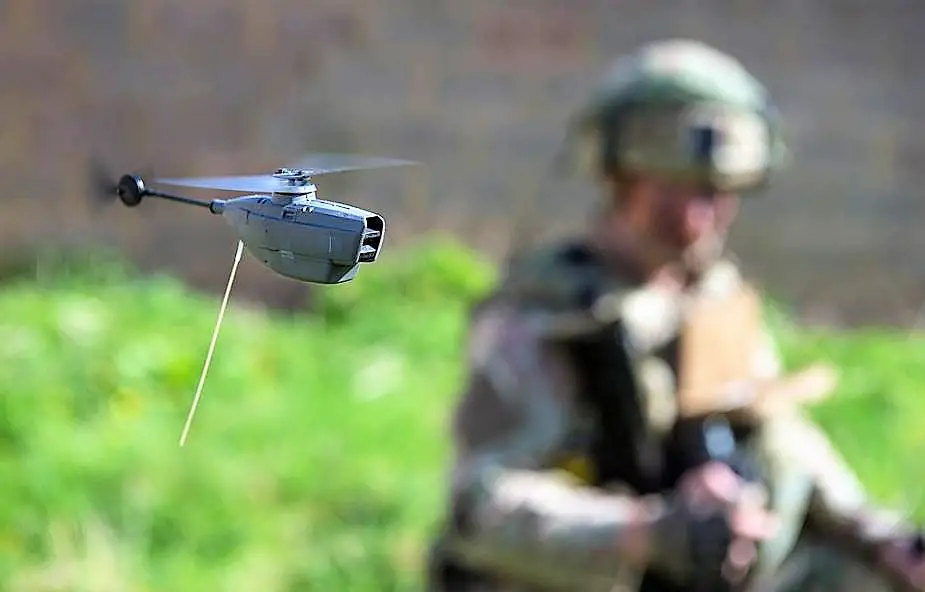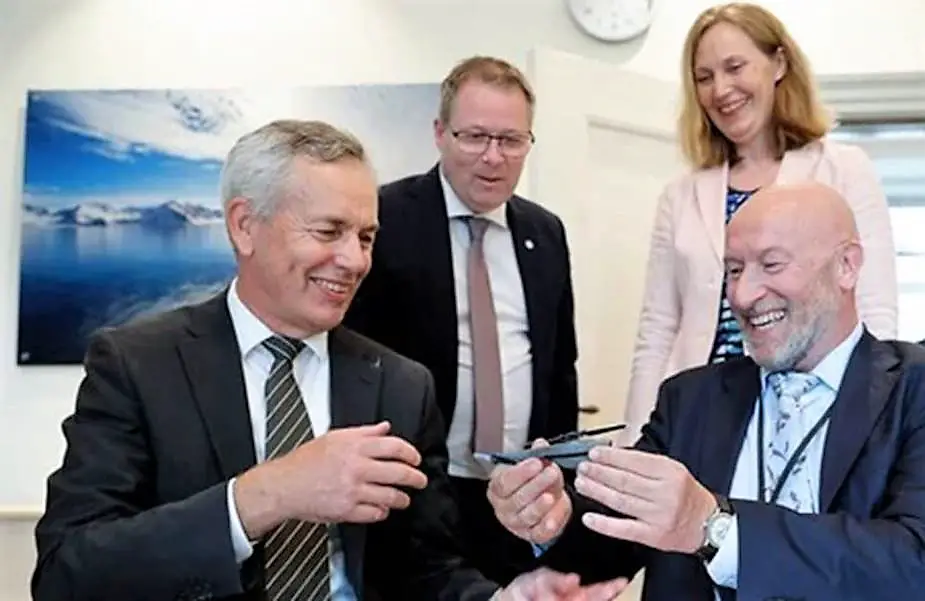Breaking news
Teledyne FLIR to supply Norwegian army with more Black Hornet nano-UAVs.
Teledyne FLIR Defense, part of Teledyne Technologies Inc., announced on 23 June that it has entered into a framework agreement worth up to NOK 475 million (approximately $48 million) with the Norwegian Defence Materiel Agency to deliver advanced Black Hornet nano unmanned aerial vehicles (UAVs). The agreement is valid for four years but can be extended a year at a time for up to three additional years.
Follow Army Recognition on Google News at this link

The Black Hornet weighs just 33 grams (less than 0.1 pounds) and measures 168 millimeters (less than seven inches). (Picture source: Wikipedia/UK Army Corporal Daniel Wiepen)
While Norway received its first Black Hornet in 2015, this agreement represents the country’s largest commitment to date. With these new orders, Norway will become one of the largest users of Teledyne FLIR’s Black Hornet Personal Reconnaissance System.
The Black Hornet weighs just 33 grams (less than 0.1 pounds) and measures 168 millimeters (less than seven inches). Well suited for operations in highly contested and GPS-denied environments, nearly silent, and with a flight time up to 25 minutes, the pocket-sized UAV transmits live visible and thermal video to the operator. Teledyne FLIR Defense has delivered more than 12,000 Black Hornets to defense and security forces worldwide.
“I would like to thank the Norwegian Government and Minister of Defence, Bjorn Arild Gram, for the continued support of the Black Hornet, which is also designed and manufactured in Norway,” said Robert Mehrabian, Chairman, President and Chief Executive Officer of Teledyne Technologies. “With this new agreement, nations cooperating with Norway may also procure the Black Hornet. As the world’s leading nano UAV system, Black Hornet delivers covert situational awareness to military units in combat operations – a crucial advantage at a time when European and allied countries confront new threats on the Continent and beyond.”
“Our Black Hornet nano UAV operates day or night and even in the most challenging GPS-denied environments, including indoors,” said Edwin Roks, Executive Vice President and Segment President Teledyne Digital Imaging. “With a range of two kilometers, the Black Hornet can fly at speeds exceeding six meters per second and communicates with an encrypted digital datalink for secure and reliable communications from tight spaces to beyond-line-of-sight applications.”
The Black Hornet Nano is a military micro unmanned aerial vehicle (UAV) developed by Prox Dynamics AS of Norway, and in use by the armed forces of India, the United States, France, the United Kingdom, Germany, Australia, Turkey, Norway, the Netherlands, Poland, New Zealand, South Africa and Algeria. Over 3,000 Black Hornets had been delivered to date.

Teledyne FLIR Defense has entered into a framework agreement worth up to NOK 475 million (approximately $48 million) with the Norwegian Defence Materiel Agency to deliver advanced Black Hornet nano unmanned aerial vehicles (UAVs). (Picture source: Teledyne FLIR)
Technical characteristics
The unit measures around 16×2.5 cm (4×1 in) and provides troops on the ground with local situational awareness. They are small enough to fit in one hand and weigh just over half an ounce (18 g, including batteries).
The UAV is equipped with a camera, which gives the operator full-motion video and still images. They were developed as part of a £20 million contract for 160 units with Marlborough Communications Ltd.
An operator can be trained to operate the Black Hornet in as little as 20 minutes. The air vehicle has three cameras; one looking forward, one looking straight down, and one pointing downward at 45 degrees. A Black Hornet package contains two helicopters, and since a 90% charge is reached in 20-25 minutes, the same as its hovering time, when one needs to be recharged the other is ready to fly. The top speed is 13 mph (21 km/h).
In October 2014, Prox Dynamics unveiled a version of its PD-100 Black Hornet with night vision capabilities, fitted with both long-wave infrared and day video sensors that can transmit video streams or high-resolution still images via a digital data-link with a 1 mi (1.6 km) range.


























